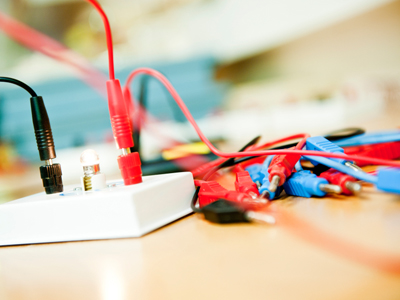

Electricity - Electrical Circuits 1
This Physics quiz is called 'Electricity - Electrical Circuits 1' and it has been written by teachers to help you if you are studying the subject at senior high school. Playing educational quizzes is one of the most efficienct ways to learn if you are in the 11th or 12th grade - aged 16 to 18.
It costs only $19.50 per month to play this quiz and over 3,500 others that help you with your school work. You can subscribe on the page at Join Us
Electrical current flows in a closed path known as an electrical circuit. When a circuit is 'broken' it means that there is a gap which is stopping current from flowing. The break could be caused by a damaged component or wire, a component or connection that has become disconnected, or where there is a switch.
Ready for more?
not all...
quizzers. Try to win a coveted spot on our Hall of Fame Page.






